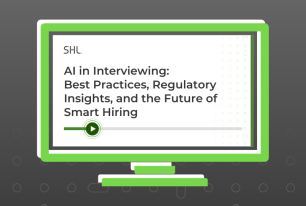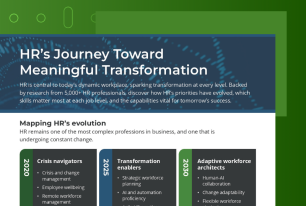Who Owns Interviewing? Why Talent Acquisition Leaders Must Take Charge
Everyone is involved in interviewing—recruiters coordinate, hiring managers decide, interviewers improvise, but who actually owns it? We explore why those responsible for talent acquisition need to take charge of the interviewing practice to maintain the systems, standards, and visibility.
Share
The accountability gap
Interviewing is a team effort but when roles and responsibilities are unclear, the process quickly unravels. Recruiters are left chasing feedback, hiring managers run interviews their own way, and interviewers improvise based on personal style and experience. This lack of clarity leads to inconsistent candidate experiences, inefficiencies, and most importantly, a lack of quality control.
Talent acquisition (TA) leaders already own sourcing, screening, and pipeline metrics. Yet, interviews—the most pivotal stage of hiring—are often left without clear ownership. Without someone accountable for the process, interviews become a black box, making it much harder to monitor, measure, or improve outcomes.
The impact of inconsistency
Lack of ownership can also result in even the most capable interviewers struggling to maintain consistency, opening the door for confusion and disorganization. Hiring managers can default to treating interviewing as an art, not a science, leading to wildly different candidate experiences and uneven evaluation criteria. Recruiters, meanwhile, are left to fill in the gaps, chasing feedback and trying to piece together a coherent process.
Without defined ownership:
- There’s no structure or standardization.
- Interviewers receive little to no training or guidance.
- Feedback is inconsistent, incomplete, or subjective.
- Decisions are made on gut feel rather than data.
- Opportunities for improvement are missed because there’s no measurement.
The result? Poorer hiring decisions, missed talent, and a process that doesn’t enable your best interviewers to become even better.
Why TA should own the interview process
TA leaders are uniquely positioned to bring order to the chaos. By owning the interviewing practice, they can set clear standards and frameworks for how interviews are conducted. This means:
- Defining what a great interview looks like for each role.
- Ensuring every candidate is assessed fairly and consistently.
- Coaching hiring teams to improve their interviewing skills.
- Measuring outcomes to identify strengths, gaps, and opportunities for improvement.
Ownership doesn’t mean TA leaders run every part of every interview. Instead, they provide the systems, tools, and oversight that empower hiring teams while also ensuring accountability and continuous improvement.
What ownership looks like
When TA leaders take charge, interviewing transforms from a loose collection of conversations into an structured, data-driven practice that is more accurate, more efficient, repeatable and scalable. This includes:
- Structured interview guides: Smarter guides aligned to job requirements and built to accurately measure relevant skills ensuring every candidate is assessed on the same criteria.
- Standardized feedback: Clear, consistent methods for capturing feedback and making sure candidates leave the process informed, respected, and engaged.
- Interview intelligence: Real-time, automatic capture of interview data for decision-making stored centrally for simpler analysis and strategic insight.
- Continuous coaching: Interviewing analytics can be used to coach interviewers and hiring managers so their interviews can be improved over time.
5 practical steps for TA leaders
Ready to take ownership? Here’s where to start:
- Define ownership: Make it clear that TA owns the interview practice, not just the scheduling.
- Set standards: Develop structured guides and clear evaluation criteria for each role.
- Enhance visibility: Use tools to monitor interviews, feedback, and outcomes.
- Coach and train: Provide ongoing support to interviewers based on real data, lifting the baseline quality of interviewing across the business.
- Measure and improve: Regularly review data and refine the process for continuous improvement.
Interviewing is too important to leave unowned. The best TA leaders don’t just fill roles, they build a high-performing, fair, and accurate hiring systems.
Download our practical guide to help benchmark your interviewing process and take clear steps toward a fairer, more structured, and insight-driven approach to hiring.









